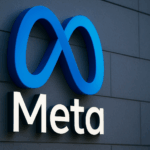Google (NASDAQ:GOOGL), in an ongoing effort to enhance its sustainability efforts, has struck a significant agreement with Brookfield Renewable for up to 3,000 MW of carbon-free hydroelectric power. The initiative aims to sustain Google’s U.S. operations with clean energy through Brookfield’s Hydro Framework Agreement, marking a notable stride towards Google’s 2030 carbon-free energy goals. This collaboration showcases a growing trend among tech giants investing heavily in renewable energy resources to ensure long-term operational sustainability.
Previously, Google’s approach to achieving zero carbon operations involved diverse energy strategies, including a significant reliance on solar and wind resources. Recently, data revealed a 12% reduction in carbon emissions from Google’s data centers despite increased electricity demand, attributed largely to cleaner energy integration. This comprehensive transition to varied renewable sources is pivotal, especially given the traditional energy consumption patterns of tech companies.
What Motivated the Agreement?
The agreement, which stands as the largest corporate clean power deal for hydroelectricity, was fueled by a shared vision between Google and Brookfield to promote a sustainable energy future. With the demand for electricity soaring due to digitalization and advances in AI, such partnerships are crucial for tech firms. Google’s aspirations to operate on carbon-free energy 24/7 by 2030 underscore its commitment to reducing its environmental footprint considerably across all regions of its operation.
How Will This Deal Impact Energy Markets?
Initially targeting the mid-Atlantic and mid-continent electricity sectors, the deal boasts flexibility to expand nationwide, reinforcing hydroelectricity’s role in meeting new energy needs. Brookfield’s intention to overhaul and upgrade hydroelectric assets complements Google’s ambitious sustainability targets. Such agreements highlight the significant transformation occurring within the energy markets, as more firms pivot towards renewable solutions to align with global carbon reduction goals.
Two hydroelectric facilities in Pennsylvania are the starting points under this agreement, with Brookfield set to relicense them. Expected to represent more than $3 billion in power value and offering 670 MW capacity, these contracts signify a robust commitment by both parties to leverage large-scale renewable resources efficiently. Connor Teskey of Brookfield Asset Management emphasized the vital role hydropower is playing in addressing the rising demand for energy.
Amanda Peterson Corio from Google emphasized the importance of responsibly expanding digital infrastructure, focusing on sustainability and reliability. The deal contributes significantly to the grid while creating jobs and providing access to carbon-free electricity. Google’s ongoing sustainable projects signify a combined effort to build a future reliant on reliable and eco-friendly energy sources.
Collaborations between major corporations and renewable energy suppliers are intensifying, driven by global carbon-neutral targets. Hydroelectricity offers a consistently low-cost energy alternative, essential for tackling high power demands while reducing environmental impacts. As technology ecosystems mature, similar strategic partnerships will likely proliferate, facilitating advancements in green energy infrastructure across various sectors.
Experts predict that strategic alliances like Google’s with Brookfield could potentially overhaul the standards for corporate energy procurement strategies. This pursuit of renewables is critical as companies seek to future-proof their operations against tightening environmental regulations and the challenges posed by climate change. The trend signifies a mindful shift toward embracing hydropower and other renewables in corporate sustainability trajectories.










